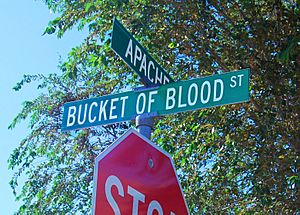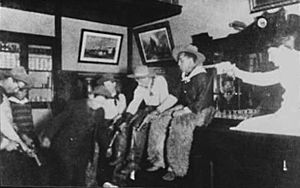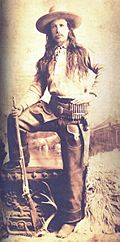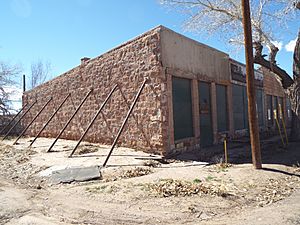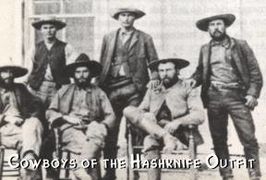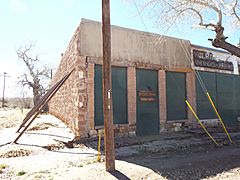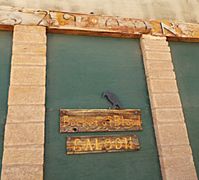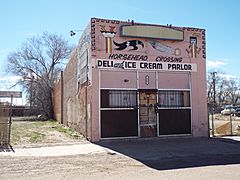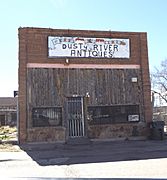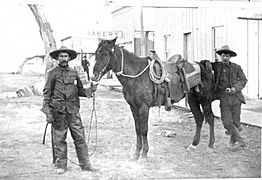Bucket of Blood Street facts for kids
Bucket of Blood Street is a famous street in the Old Downtown area of Holbrook, Arizona. It's located just off U.S. Route 66, a historic highway. This street is also very close to the old Santa Fe Railroad station, which was built way back in 1882.
Holbrook started as a railroad stop in the 1880s. Back then, it was a wild desert town. Many ranchers, cowboys, and even some outlaws lived there. It was known for its exciting, and sometimes rough, encounters. People used to say Holbrook was a "tough town."
Contents
History of a Wild West Town
How the Saloon Got Its Name
For many years, a place called Terrell's Cottage Saloon stood on this street. It became known as the Bucket of Blood Saloon after a very serious fight happened there. This fight was so intense that it looked like a bucket of blood had been spilled on the floor. The saloon was a popular spot for cowboys and other tough characters. Fistfights and gunfights often broke out there.
The year 1886 was a particularly wild time in Holbrook. A big fight happened at the saloon during a card game. It was between rival groups of cattle wranglers, including some from the famous Hashknife Outfit. The fight was so memorable that it gave the saloon its dramatic name.
Tales from the Old West
One story from around 1888, told by Albert F. Potter, describes how the saloon might have gotten its name. He wrote about two horsemen riding into a camp near Holbrook. One of them, Joe Crawford, a cowboy from the Hashknife Outfit, was badly hurt. His head was wrapped in bloody bandages. The other man was George Bell, a gambler.
Potter learned that Crawford had been in a card game at the saloon. Another man, Ramon Lopez, hit Crawford with his gun. Crawford fought back, and a big shootout began in the saloon. Crawford and Bell then escaped. Potter believed that Joe Crawford might have actually been Grat Dalton, a member of the famous Dalton Gang of outlaws. This dramatic event, according to Potter, was the reason the saloon got its unforgettable name.
George W. Hennessey, who was once a member of the Hashknife Outfit, managed the Bucket of Blood Saloon for about a year around 1908.
In 1913, a newspaper reported that a church was finally going to be built in Holbrook. It was said that the saloon owner was not happy about this, as it marked the "end of an era." Holbrook had been the only county seat in the United States without a church until then.
The Historic Saloon Building
The Bucket of Blood Saloon building is a very old and important structure. It's located on Bucket of Blood Street and is part of the South Central Avenue Commercial Historic District. This district is so important that it's listed on the National Register of Historic Places.
The building is about 60 feet (18 m) long. It has a main entrance in the middle with large windows on both sides. The building was made from strong sandstone blocks. The original walls were also made of adobe, a type of sun-dried brick, though only a small part of those walls remains today. The roof is made of corrugated tin. Inside, the floor and ceiling are made of special tongue-and-groove wooden strips.
For a while, the Bucket of Blood Saloon was more than just a saloon. It served as the town hall, a community center, a court, and a place where people gathered. By 1977, the Navajo Community College was using the old saloon building as a warehouse.
Gallery


